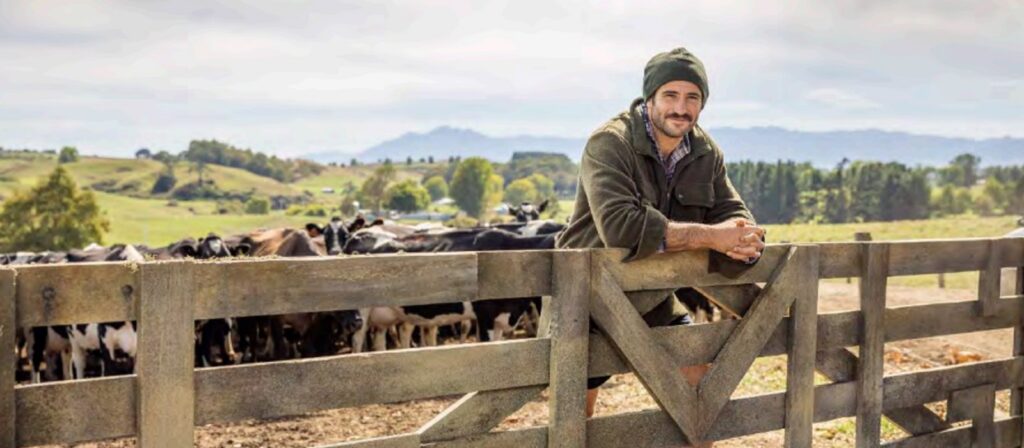Ben Telfer:
Hello everyone, and welcome to today’s ICMIF webinar, “Unlocking success in core system implementation as part of a digital transformation journey.” Today is Episode 11 in our The Digital Mutual series and today we will hear the case study of Wawanesa Insurance in terms of their digital strategy journey and pursuit of digital transformation.
I’m very pleased to hand over and introduce today’s speaker, Tracy Riley, who is Chief Digital Officer at Wawanesa, based in Canada. Tracy, great for you to join us today and I’ll hand over to you.
Tracy Riley:
Thank you so much, Ben, much appreciated. I really appreciate this opportunity to speak about our journey. Before I get started, I wouldn’t be Canadian if I didn’t talk about hockey and the NHL and I just want to do a shout out to our Winnipeg Jets that won their first game last night in the playoff series. Go Jets! So today we’ll talk about Wawanesa’s digital transformation journey, and in particular our strategic system renewal program that I was very fortunate to co-lead with someone from insurance applications.
Our agenda today is we’ll set the stage by giving you some context on who we are at Wawanesa. So we’ll move into our history with Guidewire and how we got here, we’ll talk about implementation challenges, because you know there always is some, and what made our program successful, the benefits we’re seeing as a result now and how we’re delivering on our promise today through digital roadmap and our innovation, and finally, we’ll have a glimpse into our club program and end off with questions.
So who are we at Wawanesa? Well, Wawanesa was formed in 1896 by a group of farmers in a small town called Wawanesa in Manitoba, Canada. This year we’re celebrating our 125 year anniversary. During our journey, we’ve expanded across Canada and the US and built three operating companies. We have our mutual here in Canada as well as our life company, and then our general company in the US. We’ve grown over 5,700 employees and over two million customers. We take pride in building on our history while being leaders in the modern insurance industry and provide ever increasing number of policy holders with excellent products and services. Our mutual ownership structure both allows us and requires us to take a steady and prudent approach to balance growth and financial strength, and our mission values and goals communicate who we are and what we believe in as an organization, and provide guidance for future development and success.
So our products and services to give you a little peek into what we do. So we write both P&C and life and we also own Western Financial Group, which is one of the largest insurance brokers in Canada. So let’s talk a little bit of about our history of Guidewire at Wawanesa. This is a really busy slide, but as you can see, it’s been a really busy time for us. We knew we needed to transform our business in order to provide our members, brokers, and employees with the experience they were looking for, and our legacy systems hindered that service quality and innovation in particularly the ability to design, implement, and launch new products in multiple markets. The lack of real-time rating, real-time processing, ability to respond quickly to the market with read some products, and our lack of digital tools was holding us back, and we knew that, and it was holding us back from being the mutual insurer we wanted to be. So we started with our claims transformation in 2012 and then moved on to our policy rating and billing replacement, otherwise known as Wawanesa Strategic System Renewal.
This was an enterprise-wide digital strategy intended to transform the way our P&C companies were serving its customers and broker partners. From 2015 to 2020, this initiative replaced the entire insurance value chain with implementations of Guidewire work, including rating. We also adopted producer edge, which we then labeled as BluePass, which is our portal for Wawanesa brokers. We also did broker integration systems, we integrated and digital intake and workforce management, commissioning building enterprise services, content management, warehousing, and a business intelligence tool for operational and management reporting. This was no small feat, but I’d like to point out a couple of critical decision points for us along the way. After a US launch, and prior to our first Canadian launch, where CEO determined we needed dedicated full-time sponsors to lead this program, and that’s where I asked leaders and I formed our partnership to focus on our people, process, and technology.
The second critical decision for us was after our first Canadian launch, where we formed a partnership with Capgemini as our system integrator. Capgemini’s Guidewire knowledge and agile delivery experience helped us bring in our delivery dates without burning out our people. Incidentally during this time, Guidewire was upgrading their versions, as you can see by the green arrows on the timeline, and by the time we completed our final launch, we were two versions behind. I was asking our Guidewire rep a question and he said, “Oh, you’re on the old version,” and I say, “you can’t say that until we’re at least done our program,” nothing like talking about legacy already.
So let’s talk a little bit about our implementation challenges because there always are with a program of this size. We entered several operational program management people and external influences that provided some challenges and hiccups along the way. So from an operational perspective, we completely rewrote and rebound our commercial and our farm products. That was our manuals, our wordings, our rate algorithms, and our business rules while were developing the Guidewire system. This required an extreme amount of communication and collaboration between various departments throughout our organization, and as much as we attempted to keep in lockstep with each other, we could not avoid some rework and project delays. After two significant Canadian releases, defect challenges and outdated technical solutions for our document in our integration solution, it did cause a bit of a delay for us because we made the decision to continue with technical releases, but ensured that our system was working well for our regions before we asked them to use it.
Due to our focus on operational performance and a rapidly changing insurance market, we have very aggressive rate and product change scheduled during peak SSR development. Our operational teams provided visibility to the overall roadmap, but this did cause some rework for our program development. However, the team managed to absorb these changes without affecting project delivery dates. During our SSR program, we changed the distribution model of our Quebec region from a direct writer to a broker distribution channel, this caused changes to our program scope, and a rework of our plan, but again, the team managed to absorb the changes without affecting project delivery dates. From a management and methodology, the SSR team did a great job in aligning with the development and delivery practices of various teams. We also fought gaps emerge in delivery, tie-back conception planning, and reworked some things as a result of that; and environments can always be a challenge, we had hundreds of environments going for different purposes, whether it be executive demos, internal and external training and testing, validation verification, the management of those environments did take some time.
And from a people perspective, we had changes to key SSR project team members in various areas of expertise, whether it was actuarial, transformation, development, project management, this did cause some communication challenges and gaps in implementation. And I couldn’t talk about this program and the timeframe that we delivered in without talking about COVID. So Wawanesa was prepared to launch the program’s final two releases in March and April 2020, when the pandemic hit, and this required Wawanesa and Capgemini resources to work entirely remote. The team was given the challenge to reset the plan for a future date, or we felt a crisis period was over, and operations were stable enough to continue. The plan was reset to launch a couple months later, and we did it completely remote with a three-tier support system in place.
So despite some of the challenges that we’ve faced, the entire program completed early and under budget. How did we do it? Well, we had a leadership focus and commitment to improving service and experience for customers, brokers, and our employees, and particularly the strong relationship, and I can’t stress this enough between IS and business working together as one was critical. Program sponsors are closely connected to a team, they have to be closely connected to a team, they need to constantly encourage and reward milestone achievements and remove barriers quickly along the way.
Another success factor is the selection of the right technology platform with solid vendor partnerships. Guidewire Insurance Suite is the new core system that supports the full life cycle of all of Wawanesa’s products in personal, commercial, farm, underwriting policy, billing, and claims, and Capgemini as our systems integrator fostered true collaboration, as well as an ability to simultaneously deliver at scale with multiple work streams, providing quicker time to market and more value. We couldn’t have done this without our team either, our individual team members’ dedication and effort to walk the extra mile on this journey was incredible. The program would have not been successful without the focus, adaptability, and ability to quickly learn and improve, demonstrated by more than 300-plus business and IT stakeholders in more than a thousand end user’s, in our regions across Canada and the US. And finally, the overall project and program budget were very well managed by just the forecasts that were visible throughout the duration of the program.
So how did we do we’re on our promise? So some of the benefits that we measure are things like operational efficiencies, we’ve reduced paper-based and manual processes, digital policy solutions, and integrations, and now we’ve reduced handoffs and exception-based underwriting, and all of these contribute to an improved cycle time and speed and response of service. Digital dashboards and reports enable our workforce management. SSR enabled a quicker response to changing markets, our modern system enables us to respond to the market quicker with improved reading sophistication. We’re actually doing twice as many rate changes as we did before, and we’re offering the right product at the right price, which is key.
SSR enabled our portals and our digital distribution. 24/7 digital access for our brokers and our customers provides them the information they need while reducing printing and distribution costs and reducing calls to our call centers and underwriting teams. As a matter of fact, the Insurance Brokers Association of Canada recently recognized Wawanesa for taking a leadership role in not only building the API that support the industry, but also in sharing them with CCO member, insurers, and vendors.
What are some of the other Benefits that we’re seeing? SSR has enabled us to improve the employee experience. We now have a modern user interface with the ability to manage language preference, quick access to information, and removal of productivity barriers, improve our ability to hire, train, and retain engaged employees, and to be honest with our legacy system, when we had people start, they looked at our screens, and we actually had people quit, so having this new user interface has been tremendous for us.
SSR has enabled us to provide our customers with simple, easy to use and understand documents. They now receive personalized wordings that are modern, clearer, and cleaner, and offering in their language of choice in Canada, in both English or French. We’ve increased data collection and analytics, enabling optimization of resources and understanding our customers and brokers, and we’re delivering exceptional customer service. Without a doubt, we contribute our corporate awards entirely to the success of SSR, but I do have to say that receiving customer awards and increasing our employee engagement during a significant transformation journey is absolutely incredible. In 2020, we received number one ranking by J.D. Power for California Auto and number one ranking in Canada for auto insurance.
So what was some of the feedback we’re getting? Our own people are loving our new system. Simple tasks that would have taken two or more days to process are now taking minutes, employees can provide exceptional service with first call resolution and real-time policy changes, and we’ve heard responses such as “amazing” and “so much easier.” Now we have an example, this is an approved sales process time that we saw in the US, and our general company was extremely organized with manual and paper-based processes as a result of technology limitations we had with our old system, and as you can see on the left-hand side, in order to process a piece of new business, the cycle time took 19 days, seven handoffs, and 13 different departments. Post-SSR, this process reduced to less than one hour, up to two handoffs, and up to three departments. Not only did this significantly improve our customer experience, we empowered our agents, and with the exceptions escalating to underwriters only as needed.
So this is an evolution, and I think it’s important to stress the evolution. Processes improved and become automated, data capture and analytics increase, and our broker and employee experience is enhanced. This is enabled by a rules-based, real-time technology, improving workflow, optimizing our workforce, and having the right people work on the right things. One of the learnings we had along this journey was that evolving from very few automated rules and very little data, to automated rules and vast amounts of data gives us the opportunity to stop the right risks for the right reason, optimizing our policy rules, and making us a better underwriting company. In addition, as underwriters spend less time on manual work and more time on training, research, and education, they increase their skills and become better underwriters. So what are our brokers saying? Real-time processing and quoting expedite, service delivery, BluePass, which is our broker portal transformed the way policies are managed by brokers, and digital products are enabling the best customer experience.
So just quickly, some of our awards and nominations. In 2020, we won the Guidewire Innovation Award, and we’ve been nominated for awards in 2021 through the Insurance Brokers Association of Canada and MuleSoft. So where are we now? I’m pleased to say we’re leveraging our investment. We’re fully integrating real-time quoting for brokers, we’re continually enhancing our digital self-service capabilities, we’re providing our brokers with the Salesforce Platform that will deliver modern and training, and we’re continuing with partner APIs to give our partners access to our core system. Internally we’re implementing bots to remove repetitive, non-value added tasks from our employees. Some of our new digital capabilities include texting, e-signatures, and electronic documents, and we’re investing in innovation such as AI document processing, quick quote, and prevention in addition to protection.
Let’s talk a little bit about our Guidewire cloud; there’s no moss growing on us. In March 2021, we kicked off our Guidewire cloud project was a plan to implement in Q1 of 2022. Our entire Guidewire platform of solutions will move at this time. The focus of this release is to adopt the new technology and support maintenance processes, then we will develop a roadmap for implementation and adoption of new business functionality along the way. So we’re actually moving from version eight, well ahead into the latest cloud version. So alignment with cloud direction… cloud is our preferred method of delivering. 40% of Wawanesa’s applications are cloud applications and we continue to migrate all our remaining systems, and our goal is to decommission our primary and secondary data centers prior to moving to our new downtown Winnipeg North American Headquarters in 2023.
I’d like to leave you with a few things. For those of you about to embark on your transformation journey, I’ll leave you with this. When I reflect on the essence of our program, a clear theme emerges, which is never underestimate. Never underestimate the communication, collaboration, drive, and sacrifice a program of this magnitude takes. Between the program team itself and all the streams and teams of people, to pricing, and corporate actuaries data, product, and claims teams, technology teams, change management, HR, communication, it goes on and on, I think you get the point. To our frontline teams, to our vendor partners, we had a massive program to deliver, all while driving our strategic plans and maintaining daily operations; never underestimate how a program of this magnitude personally impacts your employees.
Changing the way people work and interact daily, sets your own employees on an emotional roller coaster, and it’s imperative that you show empathy and patiently guide and lead them through their individual change journeys. Never underestimate the importance of every single role on the program, from the subject matter experts to the analysts, developers, testers, change management, program management, and the entire team to our partners again. Everyone had a role to play in the successful implementation of this program and last, but certainly not least, never underestimate the power of a high performing team and what it’s capable of. Our team held each other accountable, we worked with each other to solve problems and challenges, and we did what it took to meet dates with high quality, and never forgot our stakeholders in the process. We celebrated our wins and we had fun together. Do not expect these changes to happen overnight, it is a journey, I stress it’s a journey and it takes a great deal of time and effort to ensure adoption and sustainment.
We did set out to digitally transform our P&C operations, and despite challenges and hurdles along the way, we did successfully deliver the program early and under budget, and many benefits have been, and continue to be realized. Wawanesa’s now positioned to be more agile and competitive in our product offerings, and we set the stage for Wawanesa’s digital transformation journey, enabling us to reinvent our underwriting and claims service experience, adopt robotics and AI to make our service more human, and offer the right products and rates for the right customer through data-driven decision making, and with that, I’d like to open it up for questions…
Ben Telfer:
Thank you very much, Tracy, for that excellent overview of your journey over the past 10 years and what you’re looking to do in the future.
Tracy, a couple of questions that just came in. You mentioned a project about how you shared APIs with other insurers, I think you called it the Data Exchange Project? Could you just explain a little bit more about that project, because it sounds very interesting.
Tracy Riley:
Yeah, it is. It’s an industry project that we’re part of and we’ve been able to deliver 10 APIs to this group to share. It’s important for us to do that. We’re a leader on that program and something that we’re quite proud of.
Ben Telfer:
Another question here, Wawanesa’s obviously very committed to the broker model. Would your digital transformation have been different if you had a more direct model?
Tracy Riley:
So one thing I didn’t make clear at the beginning, which I should have, is that in the US, we are a direct writer and in Canada we are a broker distribution writer. So we actually used an agile methodology through both deliveries. The difference between the two, I would say, is in the US, our products are personal lines only, so there was a little more simplicity, I would say, in what we had to deliver versus the extra layer on the broker distribution side, and then our products in Canada… we have way more products that are more complicated, so it was a bit more of a complicated delivery to do, but I know it was some of the same challenges through both and opportunities.
Ben Telfer:
A couple of questions we’ve got here, Tracy, around the sort of people and talent, and you mentioned some of the people challenges you had. Did you experience any challenges in terms of attracting talent to come and work at Wawanesa?
Tracy Riley:
That’s a great question. So I’ll talk about maybe two things, one is project resources. So Winnipeg is not the biggest city in Canada, and so trying to get resources to Winnipeg was a bit of a challenge, and for some people that we had coming from India or the US, they’re taking three flights to get to us all the time, so we did a lot of virtual teamwork. As far as attracting and retaining employees at Wawanesa, the new system actually unlocked a lot for us. As I mentioned through the presentation with the legacy system we had, it made everyone’s job harder, and so when we started our journey into the new system, we had a lot of our newer employees really excited about the new system because they had come from other companies that had a newer system, and so we automatically had some change champions through that as well.
Ben Telfer:
Another question, you mentioned quite throughout that the success factors would do to your people and to leadership. Going back 10 years, would you say that digital transformation was the number one priority of leadership and did that help get the buy-in from everybody across the organization?
Tracy Riley:
I would say at the highest level of absolutely. We had leaders that could see where we needed to be and, and that’s why we started also. Our CIO, Cam Loeppky, started it off with, “You know, we really need to replace our system. It’s getting challenging to do what we need to do,” and between him and our CIO and some of our other senior leaders, they really recognized where we needed to be, and that’s where we headed towards, “Okay, let’s make this technology so we can do the digital we need to be, but the transformation that needs to go along with that,” and that’s why a decision was made along the way as well, to make it a partnership between what we needed on the business side, so the people and processes, as well as the technology, and I would say without that partnership and the leadership on the team, as well as the team itself working as one unit to make sure that this program was delivered was key for us.
Ben Telfer:
Another question here, which talks about customer advocacy measurement, and whether you had seen any uptick in your NPS since the implementation over the last couple of years, or whether it’s too early to measure that.
Tracy Riley:
We have been measuring our NPS scores and they have gone up. And, I’ll be very clear, there’s a lot of Benefits we’re seeing from the program, but often like with many programs, what you implement is a minimum viable product, and so it’s really key for every organization that does that to make sure that you go back and you do a continuous improvement. So you do run into some hurdles along the way, and so having said that, we are getting us some great feedback from our customers, from our brokers, and from our employees; we still have some continuous improvement to do, and we’ll continue to do that, but our NPS scores have improved without a doubt, and in particularly with claims, we’ve seen a recent uptake and NPS scores from a central digital solution that we were able to do because of our initial core system replacement with Guidewire.
Ben Telfer:
I think we will have a couple more questions. One here, what’s next in the next 10 years, where do you see Wawanesa in 2030?
Tracy Riley:
It’s funny you should ask that because we’ve been having a lot of conversations about “What does insurance 2031 look like?” I wish I had a crystal ball. I think the rapid pace of technology and what mature companies need to do, that were born in the industrial ages, is lots about digital for us. Very, very focused on analytics, particularly advanced analytics and innovation, innovation is key for us as well to make sure that Wawanesa needs to remain feasible for all of our members.
Ben Telfer:
A couple more questions just come in, and I think we’ve got enough time, Tracy, just to pose them to you. How involved, or how important were the broker partners in your transformation?
Tracy Riley:
That’s a great question. One thing that everybody needs to be careful when they’re embarking on a transformation like this is that they don’t forget their stakeholders, and that was key for us. So we did a lot of communication, a lot of involvement. We actually created a broker advisory group that we ran some of our ideas by to make sure that what we were doing would work with broker processes and would enable them to provide the service that they needed to do, so that was key for us, absolutely key. Our broker partners are very important to us.
Ben Telfer:
Just one last question, could you comment on the interrelationship between your Guidewire and digital programs? Do you regard them as separate but codependent or do you regard them as one and the same?
Tracy Riley:
That’s a great question, maybe I’ll give you a little insight into that. My recent role, a recent appointment to Chief Digital Office is in a really close, tight partnership with our Chief Information Officer, and how we look at it as from the digital side of things. I’m, more on the strategy and in the priorities, and then our CIO is on the how to get that done. So we do have teams dedicated to our core, Guidewire management, and support, and maintenance, and then we have a separate teams for digital solutions, but I can’t stress enough how important the collaboration is between those teams, because obviously whatever they do, they’re interacting… there’s lots of integrations and lots of interactions, so we actually created a digital advisory group where we all come together between our operating business partners, as well as our digital team, and our marketing, and strategy, and IS team to make sure that we’re all on the same page with our strategies and our priorities.
Ben Telfer:
Excellent. Tracy, thank you so much for answering those questions. Anybody in the audience, if you’ve got any further questions or people watching this recording would like to ask Tracy or Wawanesa any questions about their digital transformation, please do get in touch, and Tracy and her colleagues will be happy to answer them. Thank you so much, Tracy for sharing your journey today.
As I mentioned before, this is part of a webinar series on The Digital Mutual, today was Episode 11, and on screen, you can see details of Episode 12, which will take part take place in September, featuring our Turkish member Anadolu Sigorta, and you can register for that webinar already, you’ll be sent a link in the followup to this webinar.
The above text has been produced by machine transcription from the webinar recording. ICMIF has made every effort to ensure that transcriptions are as accurate as possible, however, in some cases some text may be incomplete or inaccurate due to inaudible passages or transcription errors. Listening to or watching the webinar recording will allow you to hear the full text as delivered during the webinar but this is available in English only. Our transcriptions are provided to enable members to select the language of their choosing using the dropdown menu above.





